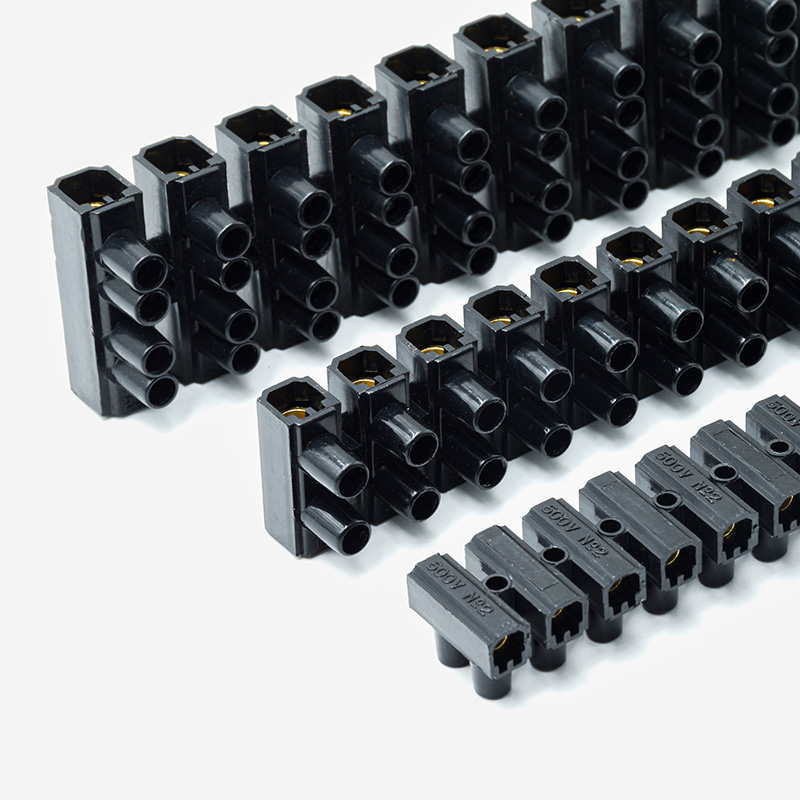
In the intricate world of electrical engineering and circuitry, terminal blocks and barrier strips are two stalwart components that often come into play. While they both serve the fundamental purpose of facilitating electrical connections, they possess distinct features and functionalities.To navigate the nuances between these components, it's essential to grasp their unique characteristics and applications. Let's delve deeper into the realm of terminal blocks and barrier strips to discern their disparities and similarities.
Terminal Blocks:
Terminal blocks, also known as connection blocks or terminal strips, are foundational elements in electrical installations. These blocks typically feature a modular design, comprising a housing with metal terminals or screw terminals arranged in rows or columns. Each terminal block may accommodate multiple connection points or poles, allowing for the termination of numerous wires or conductors within a single block.
Key Characteristics of Terminal Blocks:
1. Multiple Connection Points: Terminal blocks often boast multiple connection points, enabling the termination of several wires or conductors in one consolidated block.
2. Screw or Clamp Terminals: Connection points in terminal blocks are commonly outfitted with screw terminals or clamp terminals, ensuring secure and reliable connections.
3. Modularity: Terminal blocks are renowned for their modular design, which facilitates easy installation, configuration, and expansion of electrical circuits.
4. Versatility: They find extensive applications across industries such as industrial automation, telecommunications, power distribution, and control systems.
Barrier Strips:
Barrier strips, also referred to as terminal strips or terminal boards, share similarities with terminal blocks but feature a distinctive attribute: insulating barriers between each connection point. These barriers provide electrical isolation between adjacent terminals, preventing inadvertent contact or short circuits between conductors.
Key Characteristics of Barrier Strips:
1. Isolated Connection Points: Barrier strips feature individual connection points separated by insulating barriers, which offer electrical isolation between adjacent terminals.
2. Screw Terminals: Similar to terminal blocks, barrier strips often employ screw terminals for securing and connecting wires or conductors.
3. Enhanced Safety: The presence of insulating barriers enhances safety by minimizing the risk of accidental contact between adjacent conductors, thereby reducing the likelihood of short circuits or electrical hazards.
4. Applications: Barrier strips are frequently utilized in applications where electrical isolation between circuits or conductors is paramount, such as control panels, instrumentation, and laboratory equipment.
Key Differences Between Terminal Blocks and Barrier Strips:
1. Isolation: The primary distinction lies in the presence of insulating barriers in barrier strips, providing electrical isolation between connection points.
2. Application Specificity: While terminal blocks offer versatility across industries, barrier strips are favored for applications necessitating enhanced electrical isolation between conductors.
3. Design Considerations: Factors such as the level of electrical isolation required, spatial constraints, and environmental conditions play pivotal roles in selecting between terminal blocks and barrier strips.
In conclusion, while terminal blocks and barrier strips share the common goal of facilitating electrical connections, their differences in design and functionality cater to distinct applications. Understanding these disparities is essential for selecting the optimal component to meet specific wiring needs, thereby ensuring safety, reliability, and efficiency in electrical systems.


